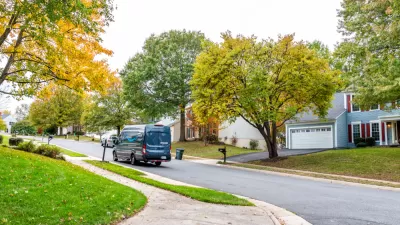Past examples of state and provincial governments preempting the land use authority of local governments present several lessons on how to do state-mandated upzoning effectively.
Michael Andersen writes of the possibility of state preemption of local zoning laws in the Pacific Northwest—i.e., state-mandated upzoning to spur housing development in high-priced cities.
With California attempting and failing to approve SB 827, perhaps the most widely discussed and debated example of state preemption in the last year, other state governments are also at various stages of consideration with the idea of passing some kind of statewide upzoning.
To ponder the potential of state-mandated upzoning in the Pacific Northwest, Andersen looks for lessons in previous examples of state preemption in the regions of greater Vancouver, the state of Washington, and the state of Oregon. Andersen finds a long history of state (or province, in British Columbia's case) preemption from the history of these states and cities. Andresen draws seven key lessons from laws like British Columbia's 1973 Agricultural Land Reserve, which set growth boundaries around Vancouver; the Washington Housing Policy Act, which legalized accessory dwelling units all over the state; Washington's House Bill 1490, which failed in 2009 but would have upzoned transit oriented neighborhoods; and Oregon's urban growth boundary law, SB 100.
After running through a detailed series of observations on these examples, Andersen also catches up on the current status of state preemption in the Pacific Northwest,
A relatively modest bill, legalizing ADUs statewide, passed Oregon’s legislature last year. (Trying to avoid the pitfall of Washington’s earlier ADU legalization, Senate Bill 1051 allowed cities to subject ADUs only to “reasonable” regulations—another case of Oregon legislators leaving the details to courts and regulators.) As in Washington, Oregon faces renewed talk about new state-level upzoning bills.
Finally, Andersen also examines the political realities state governments will have to negotiate to enact mote state preemption in the future.
FULL STORY: COULD STATE-LED UPZONES HAPPEN HERE? 7 LESSONS FROM MODERN CASCADIA

Planetizen Federal Action Tracker
A weekly monitor of how Trump’s orders and actions are impacting planners and planning in America.

Restaurant Patios Were a Pandemic Win — Why Were They so Hard to Keep?
Social distancing requirements and changes in travel patterns prompted cities to pilot new uses for street and sidewalk space. Then it got complicated.

Maui's Vacation Rental Debate Turns Ugly
Verbal attacks, misinformation campaigns and fistfights plague a high-stakes debate to convert thousands of vacation rentals into long-term housing.

In California Battle of Housing vs. Environment, Housing Just Won
A new state law significantly limits the power of CEQA, an environmental review law that served as a powerful tool for blocking new development.

Boulder Eliminates Parking Minimums Citywide
Officials estimate the cost of building a single underground parking space at up to $100,000.

Orange County, Florida Adopts Largest US “Sprawl Repair” Code
The ‘Orange Code’ seeks to rectify decades of sprawl-inducing, car-oriented development.
Urban Design for Planners 1: Software Tools
This six-course series explores essential urban design concepts using open source software and equips planners with the tools they need to participate fully in the urban design process.
Planning for Universal Design
Learn the tools for implementing Universal Design in planning regulations.
Heyer Gruel & Associates PA
JM Goldson LLC
Custer County Colorado
City of Camden Redevelopment Agency
City of Astoria
Transportation Research & Education Center (TREC) at Portland State University
Camden Redevelopment Agency
City of Claremont
Municipality of Princeton (NJ)





























